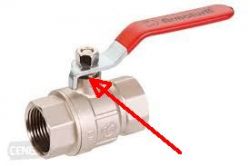Hello.
I have a problem with the pressure drop in underfloor heating (water in a closed system is heated by an Urlich oil oven). For some time, the pressure drops in the expansion tank by virtually 1 bar per week (about one dash each day). A week ago, a plumber came to my place and he replaced the expansion tank with a new one, so it is not the tank's fault.
This problem has been going on for 2 months since the plumber replaced the thermostatic mixing valve for me. After a few days the pressure dropped to 0 and before I realized what had happened, the furnace walked so I suspect that from 1 day. Since then, the pressure drops and I have to allow water. To check, I turned off the inflow and outflow valve from the water distributor in the floor. Still, the pressure began to drop. So you can exclude floor installation. Only the section from the furnace, expansion tank to the distributor remains. I also looked at all the pipes and connections that are above the floor (some pipes are under the tiles) but I did not find any leakage.
I will also add that as the oven heats, the pressure increases by about 2 lines and there are no drops. After the furnace switches off, the pressure returns to its state before switching on and when the furnace does not work after about 5 hours, the pressure begins to drop. The longer the stove does not turn on, the more pressure falls.
Unfortunately, I am not a plumber myself and I rather do not want to do anything myself, but the plumber who made the installation for me and all the replacement lives 30 km from me and I have trouble contacting. Therefore, I am asking for advice on what else I can check or suggest to the plumber because I have already run out of ideas and the plumber also does not know what it can be because he bet on the expansion tank.
Thank you in advance for your help.
PS. I am sorry that I wrote so much but I wanted to describe the situation well.
I have a problem with the pressure drop in underfloor heating (water in a closed system is heated by an Urlich oil oven). For some time, the pressure drops in the expansion tank by virtually 1 bar per week (about one dash each day). A week ago, a plumber came to my place and he replaced the expansion tank with a new one, so it is not the tank's fault.
This problem has been going on for 2 months since the plumber replaced the thermostatic mixing valve for me. After a few days the pressure dropped to 0 and before I realized what had happened, the furnace walked so I suspect that from 1 day. Since then, the pressure drops and I have to allow water. To check, I turned off the inflow and outflow valve from the water distributor in the floor. Still, the pressure began to drop. So you can exclude floor installation. Only the section from the furnace, expansion tank to the distributor remains. I also looked at all the pipes and connections that are above the floor (some pipes are under the tiles) but I did not find any leakage.
I will also add that as the oven heats, the pressure increases by about 2 lines and there are no drops. After the furnace switches off, the pressure returns to its state before switching on and when the furnace does not work after about 5 hours, the pressure begins to drop. The longer the stove does not turn on, the more pressure falls.
Unfortunately, I am not a plumber myself and I rather do not want to do anything myself, but the plumber who made the installation for me and all the replacement lives 30 km from me and I have trouble contacting. Therefore, I am asking for advice on what else I can check or suggest to the plumber because I have already run out of ideas and the plumber also does not know what it can be because he bet on the expansion tank.
Thank you in advance for your help.
PS. I am sorry that I wrote so much but I wanted to describe the situation well.





